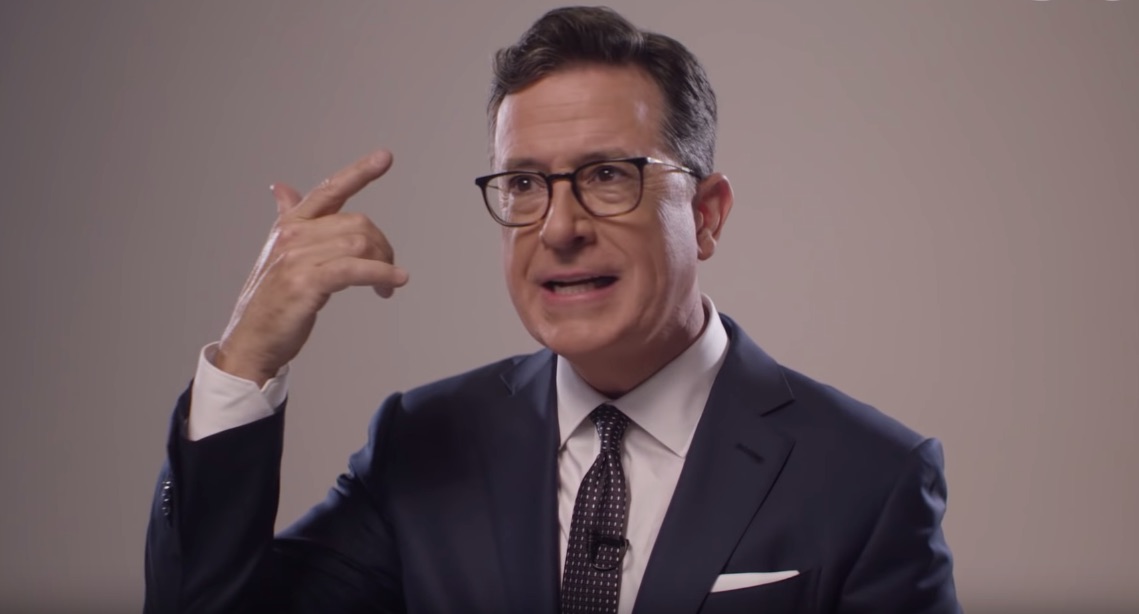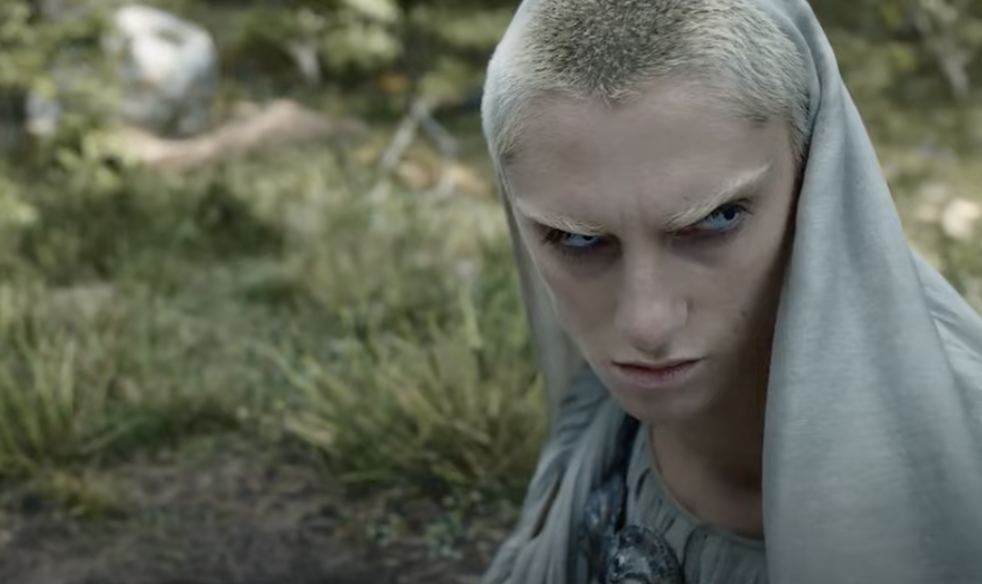Well folks, we’re here. After years of secrecy, months of fanfare (and fan hate), and weeks of soaring cinematography accompanied by Bear McCreary’s equally triumphant score, Season One of the Lord of the Rings prequel series The Rings of Power will air on Friday, October 14 on Amazon Prime. And the fan theories have reached boiling point.
Some theories have already come to pass. Case and point, many fans already (correctly) worked out that the Southlands occupied the space on the map traditionally depicting Mordor. And in episode 6: “Udûn”, we got that confirmation (sidenote: did anyone else find it eye-roll inducing when, in episode 7: “The Eye”, the camera panned up to show the burning land, and then had the title of Southlands “burn away” to say Mordor? Dear showrunners, we figured it out last episode. Most Tolkien-heads saw it coming from the start. Give this audience some credit. We are nerds! We are active viewers! Anyway, back to my point.)
Now, it’s clear that we won’t have every theory debunked by the end of episode 8. And given the rather strange pacing of this show, I’m not even sure where we’re headed narrative-wise — and I know my Silmarillion fairly well. Even so, all of the dramatic uncertainty means that fan theories abound. So let’s review the two biggest theories and whether we think they will be confirmed by Friday’s end.
Obviously, spoilers ahead!
Theory 1: Halbrand’s Identity, or, the “sexy Sauron” theory
The most prominent rumor making the rounds is that Halbrand – the lost king of the Southlands and Aragorn analogue – is Sauron in disguise. I’m personally a huge fan of this theory, as it would indicate to me that the writers are trying to honor the material while also surprising loyal Tolkien viewers. Tolkien fans know that, in the Second Age, Sauron came to the elves in fair guise as “Annatar,” the Lord of Gifts, and helped Celebrimbor to craft the rings of power. As material for exciting storytelling, this creates a problem for the writers in sustaining any dramatic tension. If, in episode one, Celebrimbor had been like “Hey, Elrond, let me introduce you to my buddy Annatar, he has a great idea,” no one would find the reveal to be dramatic and his “secret” identity would have leaked before the pilot finished. Revealing Halbrand to be Sauron presents the story the fans know in a novel way.
Here’s why I think this one might be true:
- Halbrand’s limited backstory.
Seriously, we know NOTHING about this guy except that he was on a boat (and let his wreck-mates perish) and is “trying to escape his past.” He’s like the dreamy boyfriend you obsess over until you realize you have NO real information about him. Galadriel, girl, he’s catfishing you! - Halbrand’s advice to Galadriel in the cells is reminiscent of Sauron and the elves.
When Halbrand and Galadriel are imprisoned in Numenor, Halbrand shares some very telling advice with his jailmate. “You’d do well to identify what it is your opponent most fears,” he tells her. “Give them a means of mastering it, so that you can master them.” Hmmm. This is exactly how Sauron got the elves to craft the rings of power. In the mythology, the elves saw their world decay as magic slowly faded across the ages. Sauron identified this as their primary fear, and arrived as Annatar with the perfect solution; magic rings that can preserve the world (if you’ve read The Lord of the Rings, this is why the fellowship are so stunned by Lothlorien. Its magic is preserved by Galadriel’s ring of power). Later in the Second Age, Sauron exploits Ar-Pharazon’s fear of death to become his most trusted advisor, turn the whole island into Morgoth worshipers, and then get the army to attack the Valar. At which point, Eru (A.K.A. God) literally intervened in the universe and drowned all of Numenor (which we’ve seen in Queen Miriel’s dream.) So, Halbrand is basically sharing his life philosophy with Galadriel in this moment. - Halbrand says a lot of ominous stuff.
Aside from his shady advice in the cells, there are a ton of moments when he says things to others that, taken with the Sauron lens, make a lot of sense. One example is when Galadriel shares the details of her brother’s death, Halbrand says to her “I’m sorry for your brother. For all of them.” Is he being empathic? Or is this a statement we’ll be reinterpreting to be literal once he is revealed? He also tells her: “you don’t know what I did before I ended up on that raft. And when the people discover it they will cast me out, as will you.” To which Galadriel repeats her deceased brother’s advice from episode one: “A Shadow of the Past” (see below). In that one jail scene alone, he tells Galadriel “[my] ancestor swore a blood oath to Morgoth … I am not the hero you seek.” Then, when Sauron confronts Adar, he asks “remember me?” to which Adar seems baffled. Interesting dynamic when you consider Adar’s claim that he murdered Sauron. I would be pissed too if my loyal servant killed me in my pursuit of the power of the rings! All in all, there’s a lot here to reinterpret when Halbrand is revealed. - Halbrand’s interest in smithing.
This one’s brief. Throughout the show, Halbrand has consistently shown an interest and skill in smithing. Who was a master craftsman, initially a Maiar of the smithing God Aüle, who could wield metal like no one else? Sauron! - Galadriel’s brother’s advice from the first scene of the show.
This one is a bit of a stretch, but hear me out. In the first episode, Finrod tells Galadriel that “sometimes we cannot know” what is light and what is dark “until we have touched the darkness.” If Halbrand is Sauron, her brother’s wisdom is a thematic and poetic thread for Galadriel’s character arc for the season/show. She is so blinded by her ambition and obsession that she cannot see that Sauron is right in front of her and she is aiding him in his evil schemes. However, as her brother advised, in order to truly grow and become wiser, she must first touch the darkness, i.e., she must first come close to Sauron himself. This is also thematically consistent with Tolkien’s views on human ethics. Also, this interpretation would explain why there are so many shots of Galadriel touching Halbrand throughout the show (seriously, watch it again and you’ll notice they focus on it a lot.)
As of the end of episode 7, Galadriel and Halbrand are on their way from Mordor to meet the elves. Perhaps this is how he meets Celebrimbor. And then when he does, he’ll casually say to Celebrimbor, “hey, that’s a pretty nice forge. I have some recommendations for how to improve it. Oh, and try using that Dwarven mithril to fashion rings.” Ending the season this way (which is how I suspect it will conclude) would be a cleverer way to reward the fans for their attentiveness to the clues and non-Tolkien fans are none-the-wiser. Whether Halbrand is revealed as Sauron (assuming this theory is true) at the end of the season is still unclear, though I’m actually inclined to say he will not be outed as Sauron formally (though I suspect something will happen that confirms to at least the fans that their theorizing was accurate).
The Meteor Man’s Identity (and the Eminem Priests)
I must admit that I actually thought Meteor Man was Sauron at the end of episode one (though I quickly changed this opinion). However, the fanbase seems to have moved away from this theory and are settling on a couple of ideas for who he is. One theory that’s gained a lot of traction is that Meteor Man is Gandalf. In the mythology, Gandalf is a Maiar Spirit. Tolkien’s mythology includes hierarchies of angels. At the top is God (Eru Iluvatar). Then the Valar, who are more akin to the Greek gods (there is a Valar of the sea, of nature, etc) who reside in Valinor in the far west (where the first scene took place). Then, there are the Maiar. Sauron is at this rank, as are balrogs and the wizards (Gandalf, Saruman). Gandalf is also associated with the element of fire. His gift as a spirit is to kindle warmth in the hearts of others, which we see multiple times in the original movies. And he has some skill with actual fire. Think back to his fireworks in the Shire and his ability to stand against a balrog on the bridge of Khazad Dum. Also, remember his speech on that bridge? “I am a servant of the secret fire, wielder of the flame of Anor. The dark fire will not avail you, flame of Udun!” So much fire imagery!
So, it’s no surprise fans are speculating the Meteor Man is Gandalf. There’s fair evidence to support this theory. Meteor Man arrives in a literal fireball from the skies. He seems to have some magical relationship with fire. His first words after waking from the crater are roughly translated as “What is fire?” And he is able to manipulate a group of fireflies to show the stars he is seeking.
However…
There’s a lot of evil energy around this guy. When Nori finds him in his crater, she notes that the fire isn’t warm at all. I’m reminded of how Galadriel’s torches didn’t give off heat in Sauron’s abandoned fortress. Also, those friendly fireflies dropped dead after Meteor Man used them. Then, there was the incident with Meteor Man freezing his arm to heal himself, when he inadvertently scared Nori. There’s definitely something elemental about Meteor Man, and he is likely part of the Maiar. The question is who? One basic knock against the Gandalf theory is that Tolkien specifically states that Gandalf came to Middle Earth in the Third Age, not the Second. However, there are actually five wizards (known as Istari in the books), and two of them came to Middle Earth in the Second Age.
This brings us to the Eminem priests.
The show trailers featured three villainous looking priests/priestesses, who showed up in episode five: “Partings” looking creepy, ominous, and gender neutral (which, side note, seems to be a lazy way of coding gender-queerness as evil. House of the Dragons has the fabulous non-binary actor Emma D’Arcy playing Rhaenyra, so they at least got that right). These folks (I’m keeping the language gender neutral) seem undoubtedly evil given their look (and, yes, they look like Eminem) and the fact that they burn down the Harfoots’ encampment. They are apparently hunting the Meteor Man. Why? Well, in the mythology, the two wizards who came in the Second Age (colloquially called the Blue Wizards) became leaders of magical cults in the far east of the continent. It could be that Meteor Man wants to do well, but may be persuaded to become a cult leader due to these priests thinking he is some emissary of Sauron. This sort of aligns with a Tolkien ethic, that nothing is inherently evil but becomes corrupted the more is detached from the Divine and turned toward power and dominance. So maybe Meteor Man is a proto-wizard that failed, which necessitated the coming of Gandalf, Saruman, and (yes!) Radagast?
One more thing to consider is the statue in the Southlands depicting a sword killing someone. Maybe the priests plan to kill the Meteor Man. To what end? This I’m not sure of. Before episode 6: “Udûn,” I actually had a working theory that the priest folks would kill Meteor Man in order to activate Mount Doom, but that’s already happened.
However, there’s one more thing that portends a sad fate for Meteor Man in the finale. If you listen to the show soundtrack by the fabulous Bear McCreary, the second-to-last track is titled “True Creation Requires Sacrifice.” This track contains various adapted themes from the season — including Galadriel’s — but the most prominent adaptation is Meteor Man’s theme, for which the orchestration is markedly ominous and dark.
Maybe Halbrand kills Meteor Man in front of the Eminem priests, revealing his treachery to all? For now, it seems likely that the Meteor Man’s narrative arc will depict some kind of divine corruption. He certainly seems to want to do good, and the Harfoots seem torn about his potential for good or for evil. I do too, but I think that is actually the point.
Check in next week for the recap, where I’ll review how right (or very, very wrong) I was here, and the implications of the finale for Season Two and beyond.






